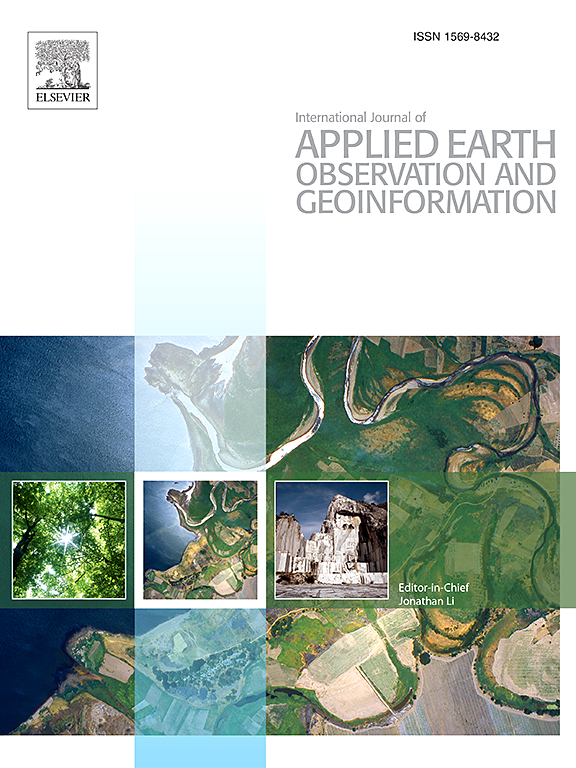Tracking diurnal variation of NO2 at high spatial resolution in China using a time-constrained machine learning model
IF 7.6
Q1 REMOTE SENSING
International journal of applied earth observation and geoinformation : ITC journal
Pub Date : 2025-03-11
DOI:10.1016/j.jag.2025.104470
引用次数: 0
Abstract
The spatially continuous dynamic monitoring of near-surface NO2 concentrations on sub-daily scales would serve to enhance awareness of the current state of air pollution, which is crucial to improving regional air quality. Satellites, like OMI and TROPOMI, are capable of observing atmospheric NO2 column concentrations on a global scale. However, the fixed transit times of the satellites and severe data deficiencies restricted their applicability for revealing patterns of change in NO2 on sub-daily scales. This study proposes a time-constrained XGBoost model (T-XGB) to convert multi-source information to daily cumulative near-surface NO2 concentrations. Furthermore, a temporally conservative downscaling framework is developed to facilitate seamless monitoring of near-surface NO2 at the 0.03°/3-hour scale in China. Evaluated with in-situ NO2 measurements, the results have demonstrated the robust and excellent performance of the T-XGB (R2: 0.920–0.948; MAE: 2.89–3.67 µg/m3/h), as well as the accuracy of the temporally conserved downscaling technique (R2 > 0.973). The 3-hour near-surface NO2 was consistent with the TROPOMI observations at the corresponding moments and it exhibited a detailed gradient variation signature. In China, near-surface NO2 exhibited a single-peak diurnal variation, with an initial increase followed by a subsequent decrease. The maximum concentration was observed between 8p.m. and 11p.m. in local time. The assessment of NO2 pollution exposure can yield disparate results when evaluated at varying time scales. Sub-daily monitoring of NO2 provides a more detailed and nuanced understanding of the pollutant, making it a more applicable and flexible tool for use in subsequent studies.

求助全文
约1分钟内获得全文
求助全文
来源期刊

International journal of applied earth observation and geoinformation : ITC journal
Global and Planetary Change, Management, Monitoring, Policy and Law, Earth-Surface Processes, Computers in Earth Sciences
CiteScore
12.00
自引率
0.00%
发文量
0
审稿时长
77 days
期刊介绍:
The International Journal of Applied Earth Observation and Geoinformation publishes original papers that utilize earth observation data for natural resource and environmental inventory and management. These data primarily originate from remote sensing platforms, including satellites and aircraft, supplemented by surface and subsurface measurements. Addressing natural resources such as forests, agricultural land, soils, and water, as well as environmental concerns like biodiversity, land degradation, and hazards, the journal explores conceptual and data-driven approaches. It covers geoinformation themes like capturing, databasing, visualization, interpretation, data quality, and spatial uncertainty.
 求助内容:
求助内容: 应助结果提醒方式:
应助结果提醒方式:


